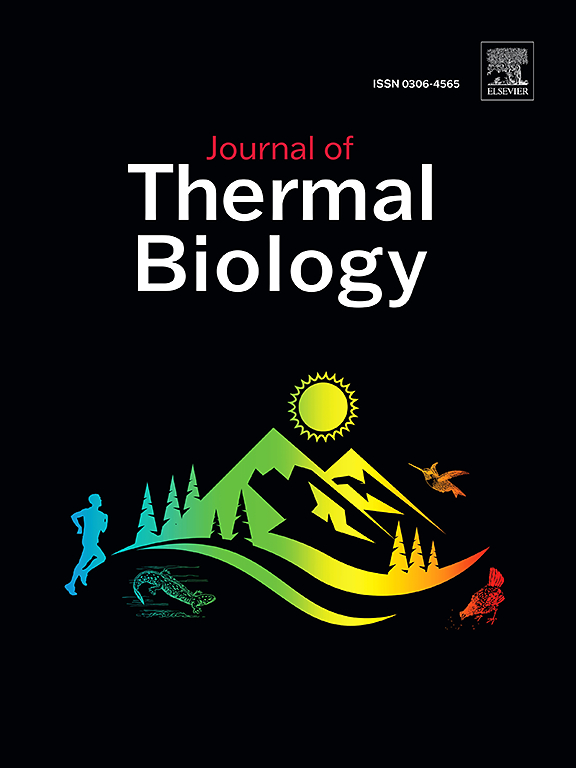多光谱热成像中的机器学习,通过热光子学提高神经系统疾病的检测能力
IF 2.9
2区 生物学
Q2 BIOLOGY
引用次数: 0
摘要
热成像作为一种非侵入性的诊断手段被广泛应用于各种医疗实践,尤其是神经病学。本文描述了一种用于检测神经系统疾病的多光谱热成像系统的开发和评估的系统方法。所提出的方法包含三种光谱类型,特别是长波红外(LWIR),中波红外(MWIR)和近红外(NIR),以及人工神经网络(ann)。这种全面的集成实现了几个关键功能:首先,表面和深层组织温度变化的成像,提供了不同深度下神经活动的信息。其次,它可以识别高分辨率检测到的低对比度温度变化。第三,它便于根据热剖面数据测量神经活动水平。该系统具有出色的诊断指标,AUC为0.923 (95% CI:特异性指数为0,敏感性范围为0.897 ~ 0.949,F1评分范围为0.891 ~ 0.917),具有临床可行性。对于各种神经系统疾病,它也达到了大约88.6%的中等诊断准确率。本研究有助于进一步提高热成像技术在神经系统疾病诊断中的效率和无创性,从而提高对各种神经系统疾病的早期筛查潜力。本文章由计算机程序翻译,如有差异,请以英文原文为准。
Machine learning in multi-spectral thermal imaging for enhanced detection of neurological disorders through thermoplasmonics
Thermal imaging is employed as a non-invasive diagnosing instrument in various medical practices, especially neurology. This paper delineates a systematic methodology for the development and evaluation of a multi-spectral thermal imaging system for detecting neurological diseases.
The proposed methodology incorporates three spectral types, specifically Long-Wave Infrared (LWIR), Mid-Wave Infrared (MWIR), and Near-Infrared (NIR), along with artificial neural networks (ANNs). This comprehensive integration enables several critical capabilities: First, the imaging of both surface and the deep tissues’ temperature changes, offering information about the neural activity at varying depths. Second, it enables the identification of low-contrast temperature changes detected with high-resolution. Third, it facilitates measuring the level of neural activity based on the thermal profile data.
This system demonstrates outstanding diagnostic metrics, such as an AUC of 0.923 (95 % CI: in addition, the specificity index is 0, and sensitivity ranges from 0.897 to 0.949, and the F1 score ranges from 0.891 to 0.917), rendering it clinically viable. It also achieved a moderate diagnostic accuracy of approximately 88.6 % for various neurological disorders.
This study contributes towards the further advancement of thermal imaging technology for diagnosing neurological disorders in more efficient and non-invasive manners, thereby enhancing the early screening potential for various neurological pathologies.
求助全文
通过发布文献求助,成功后即可免费获取论文全文。
去求助
来源期刊

Journal of thermal biology
生物-动物学
CiteScore
5.30
自引率
7.40%
发文量
196
审稿时长
14.5 weeks
期刊介绍:
The Journal of Thermal Biology publishes articles that advance our knowledge on the ways and mechanisms through which temperature affects man and animals. This includes studies of their responses to these effects and on the ecological consequences. Directly relevant to this theme are:
• The mechanisms of thermal limitation, heat and cold injury, and the resistance of organisms to extremes of temperature
• The mechanisms involved in acclimation, acclimatization and evolutionary adaptation to temperature
• Mechanisms underlying the patterns of hibernation, torpor, dormancy, aestivation and diapause
• Effects of temperature on reproduction and development, growth, ageing and life-span
• Studies on modelling heat transfer between organisms and their environment
• The contributions of temperature to effects of climate change on animal species and man
• Studies of conservation biology and physiology related to temperature
• Behavioural and physiological regulation of body temperature including its pathophysiology and fever
• Medical applications of hypo- and hyperthermia
Article types:
• Original articles
• Review articles
 求助内容:
求助内容: 应助结果提醒方式:
应助结果提醒方式:


